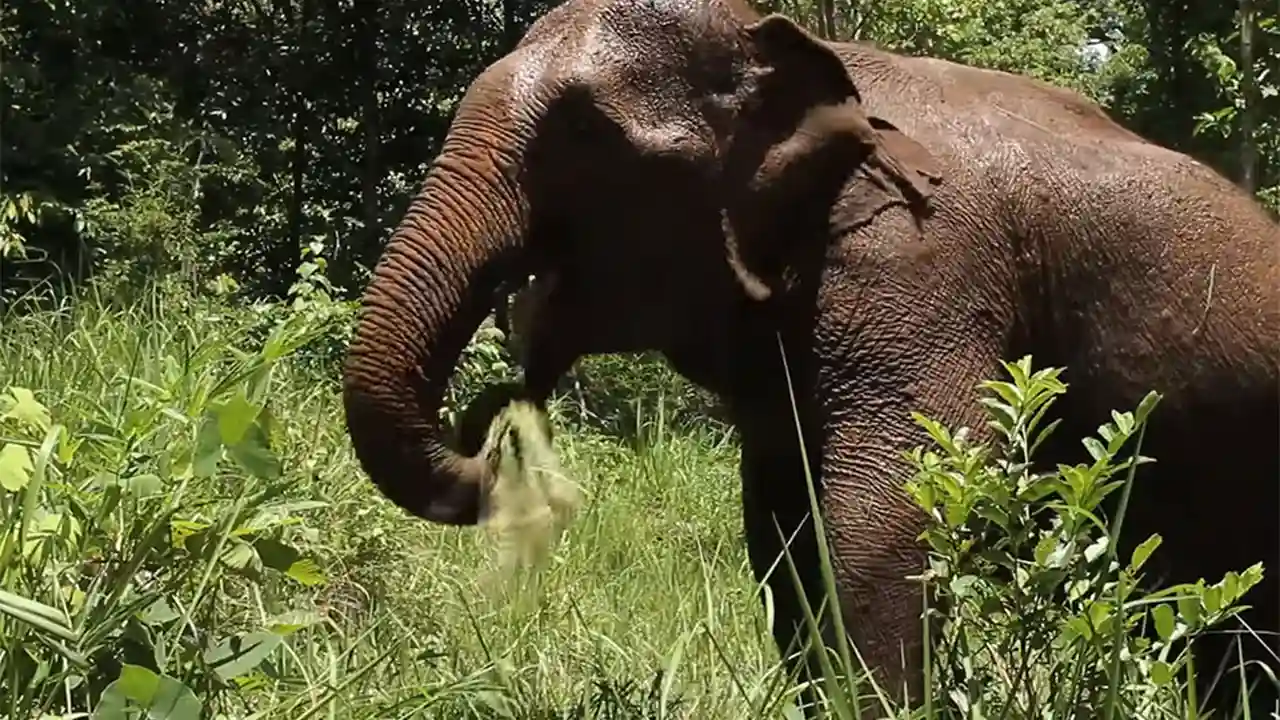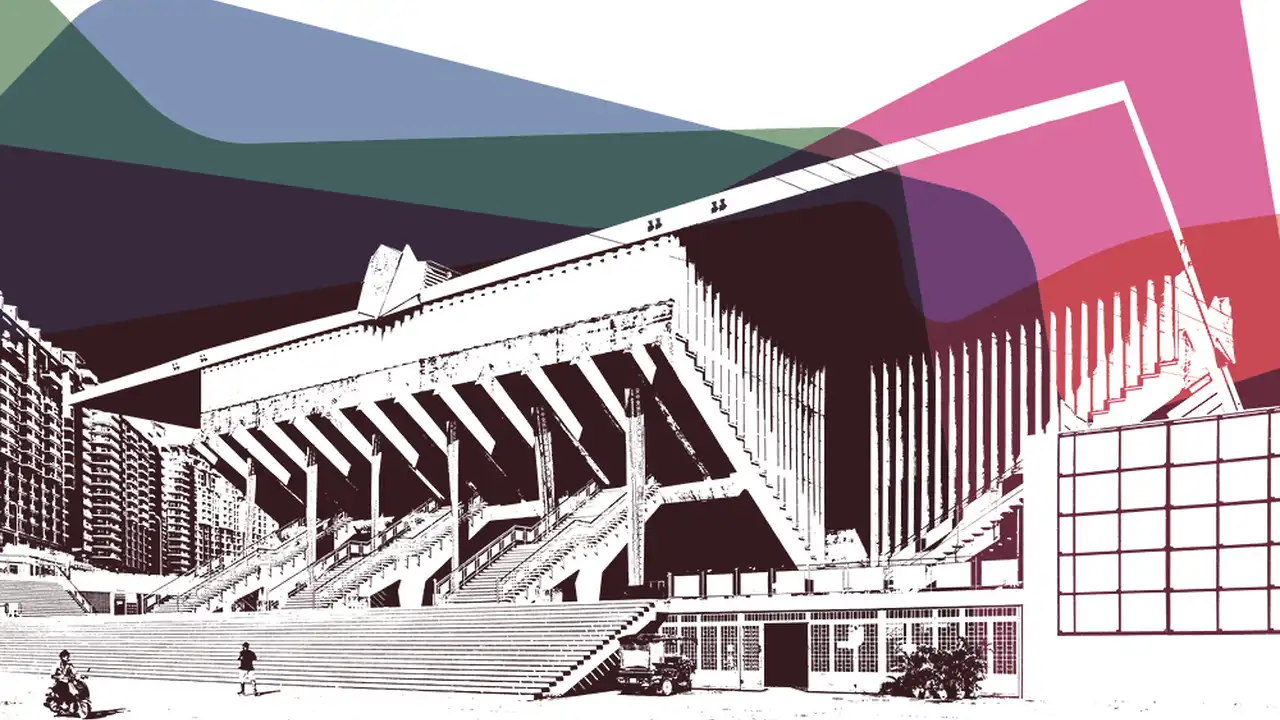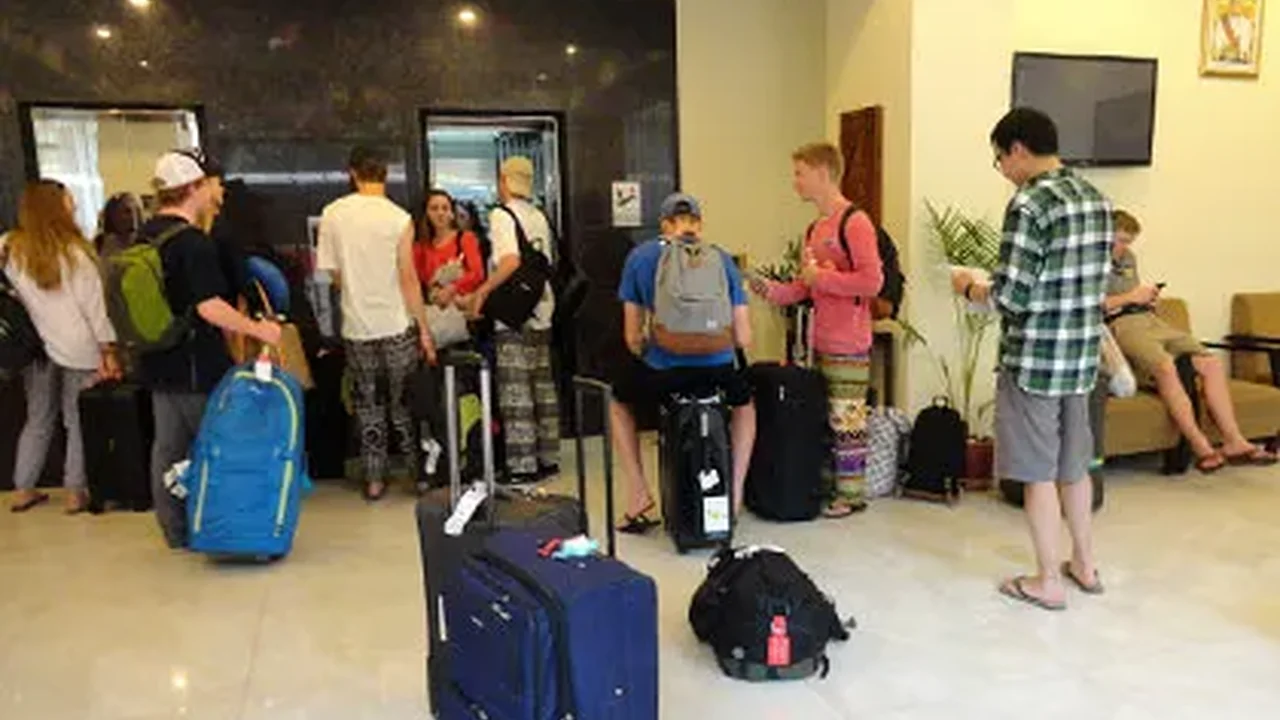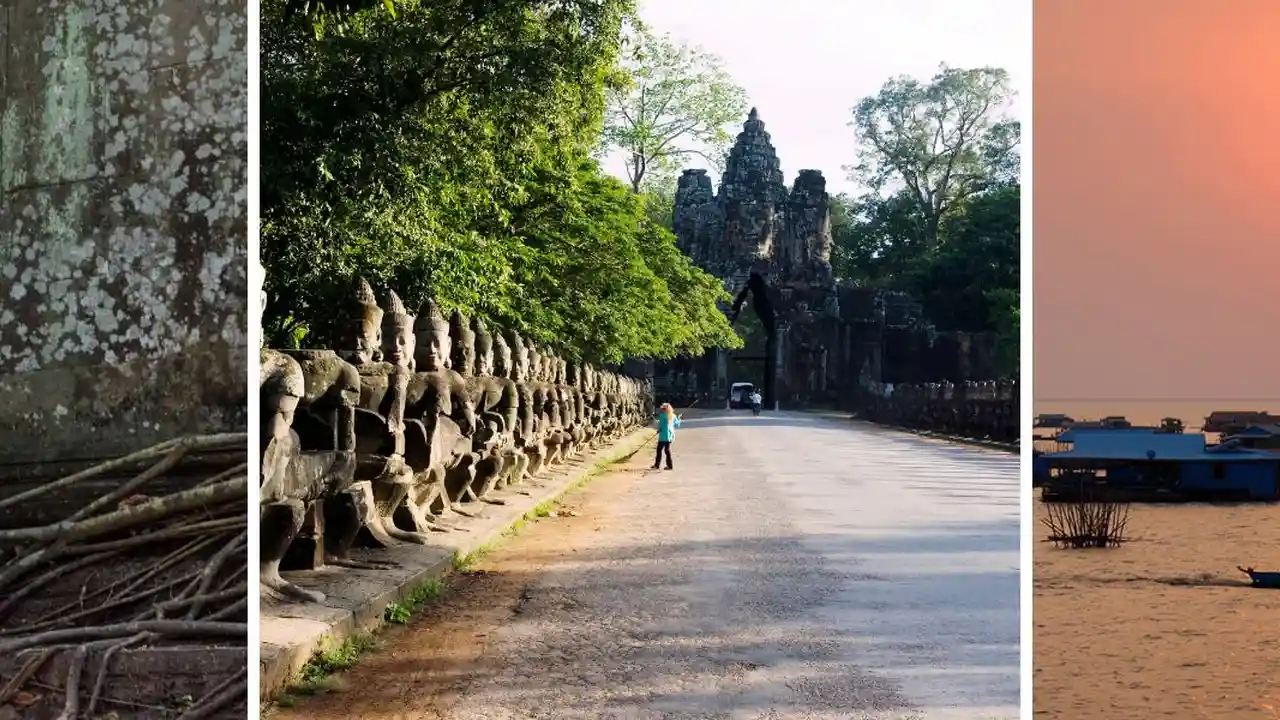Elephant Sanctuaries in Cambodia: Ethical Encounters for US Visitors

Ethical Elephant Tourism in Cambodia A Guide for US Travelers
Hey there, fellow travelers! Planning a trip to Cambodia and dreaming of getting up close and personal with elephants? Awesome! But before you book that elephant ride, let's talk about ethical elephant tourism. We want to make sure our interactions with these magnificent creatures are positive for them, not harmful. This guide is especially for you, our friends from the US, to help you navigate the world of elephant sanctuaries in Cambodia and choose experiences that prioritize elephant welfare.
Understanding the Issues Elephant Riding and Beyond
For years, elephant riding was a popular tourist activity. But the truth is, it's incredibly harmful to elephants. They're forced to carry heavy loads, often endure brutal training, and suffer long-term physical damage. Thankfully, more and more people are realizing the ethical implications and seeking out sanctuaries that offer a different kind of experience. These sanctuaries focus on observing elephants in their natural habitat, providing them with food, and supporting their rehabilitation. Think of it as a chance to connect with these amazing animals on their terms, not ours.
Choosing the Right Sanctuary What to Look For
Not all sanctuaries are created equal. Some masquerade as ethical havens while still exploiting elephants. Here's what to look for when choosing a sanctuary:
- No Riding: This is a non-negotiable. A true sanctuary will never offer elephant rides.
- No Forced Performances: Avoid places that make elephants perform tricks or paint. This is unnatural and stressful for them.
- Natural Habitat: The elephants should have plenty of space to roam and graze in a natural environment.
- Positive Reinforcement: Look for sanctuaries that use positive reinforcement techniques, like rewarding elephants with food, rather than punishment.
- Transparency: A reputable sanctuary will be open about its practices and happy to answer your questions. Don't hesitate to ask about their elephant care, rescue stories, and conservation efforts.
- Mahout Interaction: Observe the relationship between the elephants and their mahouts (caretakers). It should be based on respect and trust.
- Limited Interaction: While you'll likely get to interact with the elephants, it should be limited and always under the supervision of experienced staff. The focus should be on observing them in their natural behaviors.
Recommended Ethical Elephant Sanctuaries in Cambodia A Detailed Look
Okay, let's get down to specifics! Here are a few sanctuaries that consistently receive positive reviews for their ethical practices:
Elephant Valley Project Mondulkiri Cambodia
The Elephant Valley Project (EVP) is located in the Mondulkiri province, known for its lush landscapes and wild elephants. EVP focuses on rescuing and rehabilitating elephants that have suffered from abuse or neglect. You can spend the day observing the elephants as they roam freely through the jungle, bathe in rivers, and interact with each other. You'll also learn about their individual stories and the challenges they face. This is a truly immersive and educational experience.
Activities: Observing elephants in their natural habitat, learning about elephant conservation, volunteering opportunities.
Cost: Day visits range from $85-$120 USD. Multi-day stays and volunteering programs are also available.
BLES (Birds, Lions, Elephants Sanctuary) Siem Reap Cambodia
While technically not solely focused on elephants, BLES is a sanctuary that prioritizes the well-being of all its animals, including elephants. They provide a safe and loving home for rescued elephants, allowing them to live out their lives in peace and dignity. You can visit BLES and learn about their work, observe the elephants, and even help with their care.
Activities: Observing elephants, learning about animal welfare, helping with sanctuary tasks.
Cost: Day visits start around $100 USD. Contact the sanctuary directly for the most up-to-date pricing.
Phnom Tamao Wildlife Rescue Center (Elephant Care) Takeo Province Cambodia
This rescue center, while also housing other animals, has an elephant care program that allows visitors to participate in the daily care of the elephants. It's important to note that this is a rescue center, so the elephants may have experienced trauma in the past. The focus is on providing them with a safe and supportive environment.
Activities: Assisting with elephant care, learning about elephant rescue, observing the elephants.
Cost: Contact the center directly for information on their elephant care program and associated costs.
Essential Gear for Your Ethical Elephant Sanctuary Visit Recommended Products
Alright, you've chosen your sanctuary, now let's talk gear! Here's a list of essentials to make your visit comfortable and responsible:
- Insect Repellent: Cambodia is home to mosquitoes, so bring a strong insect repellent to protect yourself from bites. Look for one with DEET or picaridin.
- Sunscreen: The Cambodian sun can be intense, so protect your skin with a high SPF sunscreen.
- Comfortable Clothing: Opt for lightweight, breathable clothing that covers your arms and legs to protect against insects and the sun.
- Sturdy Shoes: You'll be doing a lot of walking, so wear comfortable and supportive shoes. Hiking sandals or sneakers are a good choice.
- Reusable Water Bottle: Stay hydrated by bringing your own reusable water bottle. Many sanctuaries have refill stations.
- Hat and Sunglasses: Protect yourself from the sun with a wide-brimmed hat and sunglasses.
- Camera: Capture your memories of these amazing animals. Be sure to turn off the flash, as it can startle them.
- Binoculars: Get a closer look at the elephants in their natural habitat with a pair of binoculars.
- Small Backpack: Carry your essentials in a small backpack.
Product Recommendations and Comparisons
Here are a few specific product recommendations to consider:
Insect Repellent
- Sawyer Products Premium Insect Repellent with 20% Picaridin: This repellent is effective against mosquitoes, ticks, and other biting insects. It's also safe for use on clothing and gear. Price: Approximately $10-$15 USD.
- Repel 100 Insect Repellent: This repellent contains 98.11% DEET and provides long-lasting protection. However, it should be used with caution and not applied to children's skin. Price: Approximately $8-$12 USD.
Comparison: Picaridin is generally considered safer than DEET and less likely to irritate the skin. However, DEET may provide longer-lasting protection in areas with high insect activity. Choose the repellent that best suits your needs and sensitivities.
Sunscreen
- Thinksport Safe Sunscreen SPF 50+: This mineral sunscreen is reef-friendly and free of harmful chemicals. It provides broad-spectrum protection and is water-resistant. Price: Approximately $20-$25 USD.
- Neutrogena Ultra Sheer Dry-Touch Sunscreen SPF 55: This sunscreen is lightweight, non-greasy, and provides broad-spectrum protection. It's also water-resistant and affordable. Price: Approximately $10-$15 USD.
Comparison: Mineral sunscreens are generally considered better for the environment and your skin. However, they can sometimes leave a white cast. Chemical sunscreens are typically more affordable and easier to apply, but they may contain ingredients that are harmful to coral reefs. Choose the sunscreen that aligns with your values and preferences.
Reusable Water Bottle
- Hydro Flask Water Bottle: This insulated water bottle keeps your drinks cold for up to 24 hours or hot for up to 12 hours. It's durable, leak-proof, and comes in a variety of colors and sizes. Price: Approximately $30-$45 USD.
- Nalgene Tritan BPA-Free Water Bottle: This water bottle is durable, lightweight, and BPA-free. It's also affordable and comes in a variety of colors and sizes. Price: Approximately $10-$15 USD.
Comparison: Hydro Flask is a great choice if you want to keep your drinks cold or hot for extended periods. Nalgene is a more affordable and lightweight option for everyday use.
Responsible Traveler Tips Making a Positive Impact
Beyond choosing an ethical sanctuary, there are other ways to be a responsible traveler in Cambodia:
- Support Local Businesses: Eat at local restaurants, buy souvenirs from local artisans, and stay at locally owned guesthouses.
- Respect Local Culture: Dress modestly when visiting temples and other religious sites. Learn a few basic Khmer phrases.
- Be Mindful of Your Impact: Reduce your waste, conserve water, and avoid single-use plastics.
- Donate to Conservation Efforts: Consider donating to organizations that are working to protect elephants and their habitat.
- Educate Yourself: Learn about the challenges facing elephants and other wildlife in Cambodia. Share your knowledge with others.
Getting to Mondulkiri and Siem Reap Transportation Options
Reaching these sanctuaries often requires a bit of travel within Cambodia. Here's a quick rundown of transportation options:
To Mondulkiri (Elephant Valley Project):
The most common way to get to Mondulkiri is by bus from Phnom Penh. The journey takes around 6-8 hours. You can also hire a private taxi, which is faster but more expensive.
To Siem Reap (BLES):
Siem Reap has an international airport, so you can fly directly from many cities in Asia. You can also take a bus from Phnom Penh, which takes around 5-6 hours.
Making the Most of Your Visit Key Considerations
A few final thoughts to ensure a memorable and ethical experience:
- Book in Advance: Ethical sanctuaries often have limited availability, so book your visit well in advance.
- Pack Light: You'll be doing a lot of walking, so pack light and bring only the essentials.
- Be Patient: Elephants are wild animals, and their behavior can be unpredictable. Be patient and respectful of their space.
- Ask Questions: Don't hesitate to ask questions about the elephants, the sanctuary, and the conservation efforts.
- Enjoy the Moment: Take the time to appreciate these magnificent creatures and the beautiful surroundings.
Supporting Elephant Conservation Beyond Your Trip
Your involvement doesn't have to end when your trip does! Consider these options:
- Donate to Reputable Organizations: There are many organizations working to protect elephants in Cambodia and around the world. Do your research and choose a reputable organization to support.
- Spread Awareness: Share your experiences and knowledge with others. Encourage them to choose ethical elephant tourism options.
- Support Sustainable Products: Buy products that are made from sustainable materials and that don't contribute to the exploitation of elephants or their habitat.
By following these tips, you can have an incredible and ethical experience with elephants in Cambodia. Enjoy your trip and know that you're making a positive difference!
:max_bytes(150000):strip_icc()/277019-baked-pork-chops-with-cream-of-mushroom-soup-DDMFS-beauty-4x3-BG-7505-5762b731cf30447d9cbbbbbf387beafa.jpg)






